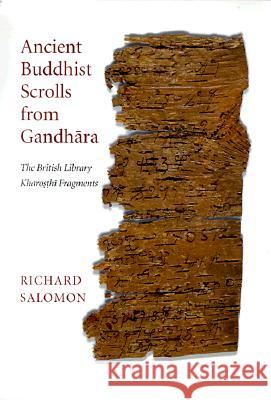Ancient Buddhist Scrolls from Gandhara: The British Library Kharosthi Fragments » książka
Ancient Buddhist Scrolls from Gandhara: The British Library Kharosthi Fragments
ISBN-13: 9780295977690 / Angielski / Miękka / 1999 / 320 str.
As the Dead Sea scrolls have changed our understanding of Judaism and early Christianity, so a set of twenty-nine scrolls recently acquired by the British Library promise to provide a window into a crucial phase of the history of Buddhism in India. The fragmentary birch bark scrolls, which were found inside one of a set of inscribed clay pots, are written in the Gandhari Prakrit language and in Kharosthi script. Dating from around the beginning of the Christian era, the scrolls are probably the oldest Buddhist manuscripts ever discovered.The manuscripts and pots come from a region known in ancient times as Gandhara, corresponding to modern northern Pakistan and eastern Afghanistan. At the peak of its influence, Gandhara was the capital of a series of wealthy and powerful dynasties and became one of the world's most important centers of Buddhism and the gateway through which Buddhism was transmitted from India to China and other parts of Asia. Gandhara was also a principal point of contact between India and the Western world. Despite abundant archeological evidence of Gandhara's thriving culture, until now there has been virtually no documentary evidence of its literary and religious canon.This volume introduces a groundbreaking project to decipher and interpret the Gandharan texts. It provides a detailed description of the manuscripts and a survey of their contents, along with a preliminary evaluation of their significance. Also included are representative samples of texts and translations.This discovery sheds new light on the regional character of early Indian Buddhist traditions, the process of the formation of standardized written canons, and the transmission of Buddhism into central and east Asia. Ancient Buddhist Scrolls from Gandhara will appeal to a broad audience with interests in Buddhism, comparative religion, and Asian languages.For more information go to the Early Buddhist Manuscript Project web site at http: //www.ebmp.org/











